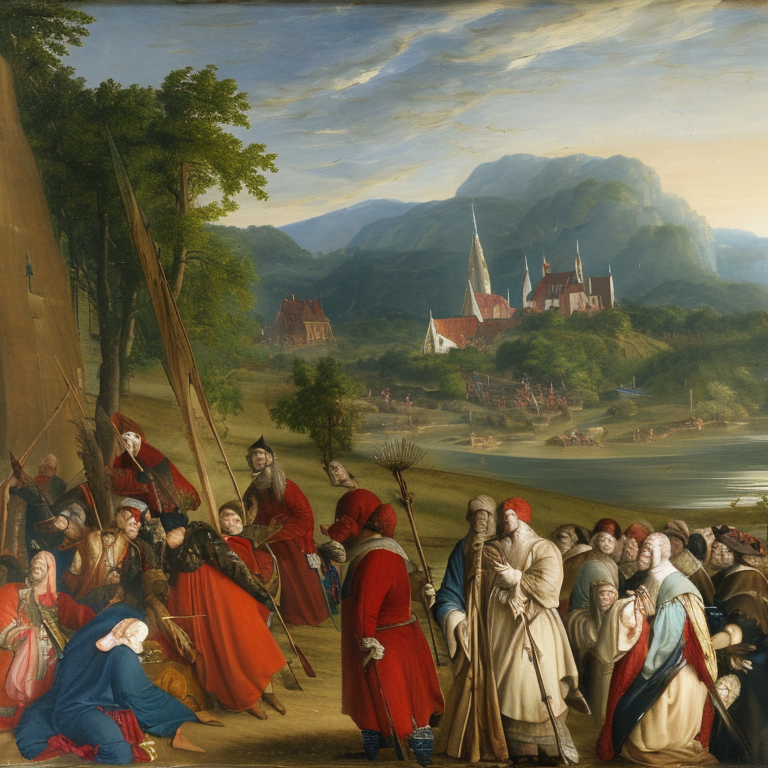The Impact of Conflict, Disease and Climate Change on Europe, 16th -17th Century
Summary
The article explores the consequences of military conflicts, infectious diseases, famine, and climate change on Europe during the sixteenth and seventeenth centuries. The region experienced significant upheavals during this time, and the article delves into the history and impact of each phenomenon. It also examines the changing diet and demographics during this time, looking at urbanization, the growth of towns, and the correlation between settlements and economic growth.
Table of Contents
- The impact of military conflicts
- The spread of infectious diseases
- Climate change and its impact
- Changing diets and demographics
- Urbanization and economic growth
The Q&A Text
The impact of military conflicts:
Q. How did military conflicts impact Europe during the sixteenth and seventeenth centuries?
A. Military conflicts were met with fear and hostility, resulting in the massacres of soldiers and stragglers. The abandonment of farmsteads and migration to fortified towns increased the risk of spreading infectious diseases, primarily the plague, typhus, and other infections. It also caused hunger and food shortages, which resulted in significant economic disruption and crisis.
Q. What were the consequences of these conflicts?
A. Conflicts led to massive migrations, resulting in the loss of life and abandonment of farms, causing economic and demographic declines.
The spread of infectious diseases:
Q. How did infectious diseases spread during this time?
A. Diseases spread throughout the continent, with large conurbations at the most risk. There is insufficient evidence about diets and the changing relationship of man to microbe, flea, and rat to explain the patterns of human mortality from epidemic disease and under-nutrition, although clearly, there was a relationship.
Q. How did societies react to the epidemics?
A. Societies reacted with fear and animosity towards soldiers and stragglers, who were often massacred. People also abandoned their farms and migrated to fortified towns, increasing the risk of spreading disease.
Climate change and its impact:
Q. How did climate change impact Europe during this time?
A. Climate change resulted in severe weather conditions, known as the Little Ice Age. This unstable weather impacted crop production across Europe, and crops yields declined. This resulted in food shortages, economic disruptions, and famine.
Q. What were the consequences of climate change?
A. Climate change destabilized farming routines and contributed to a sense of crisis among the people. Wheat was the staple food of many, and the diet of all but the rich was inferred from records of what was purchased. The local diet included vegetables such as parsnips, carrots, cabbages, and turnips. Meat and fish were more seasonal and local.
Changing diets and demographics:
Q. What was the impact of changing diets during this period?
A. The local diet diversified significantly, and new vegetables started getting cultivated, such as pumpkins, melons, cucumbers, and courgettes. The diet was primarily vegetarian, with meat and fish being a seasonal and local source of food.
Q. How did demographic changes occur during this period?
A. The gains of the sixteenth century in southern and central Europe were mostly wiped out in the first half of the seventeenth century, causing regional divergences that pulled Christendom in different directions. The growth in urban space was not uniform, but the proportion of Europe’s population living in towns had surpassed that of China by 1650. By then, more people had started living in cities than they did in 1500.
Urbanization and economic growth:
Q. How did urbanization lead to economic growth?
A. The prosperity of urban space was as much based on transformations in its rural hinterland as in its urban centers. New towns flourished as nobles and princes maximized the value of their estates and fostered urban investment. Urbanization was not a measure of ever-continuing European growth, however, and small towns depended for their viability on the economic landscape around them, and they did not all survive.
Q. What regions recorded the most significant urbanization growth during this time?
A. The growth of urbanization was not uniform, but the proportion of Europe’s population living in towns had surpassed that of China by 1650. The most significant urbanization growth during this period occurred in northwestern Europe, along the lower Rhineland, and across the North Sea in eastern England.
Conclusion
The sixteenth and seventeenth centuries were a period of significant transformation in Europe, with conflicts, epidemics, and climate change shaping the region’s history. The impact of these phenomena was felt across the continent, with massive migrations, economic disruptions, famine, and demographic declines. Despite this, the period saw significant urbanization, particularly in northwestern Europe, which impacted economic growth and transformed the agricultural landscape. Overall, the period remains a fascinating period of history that offers valuable insights into how societies respond to major transformations and disruptions.







